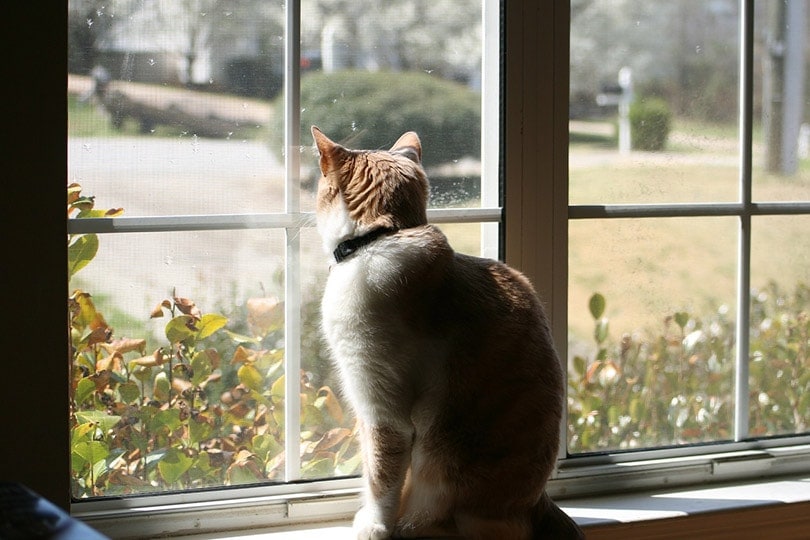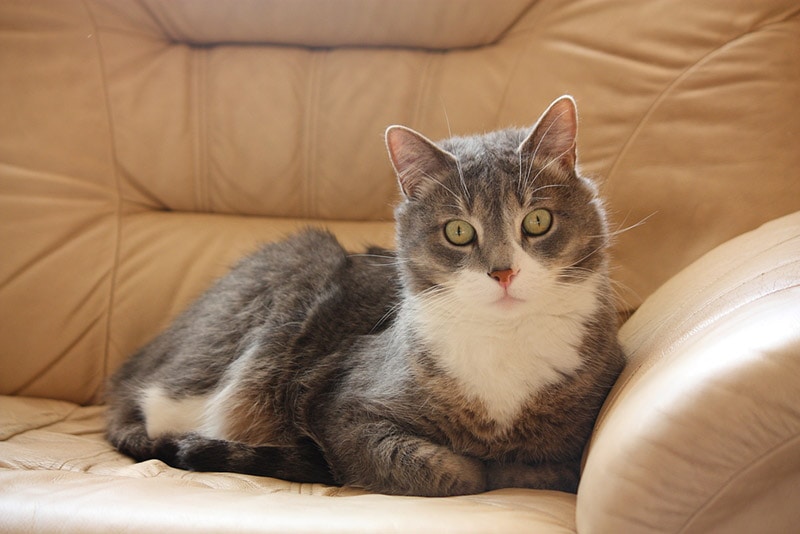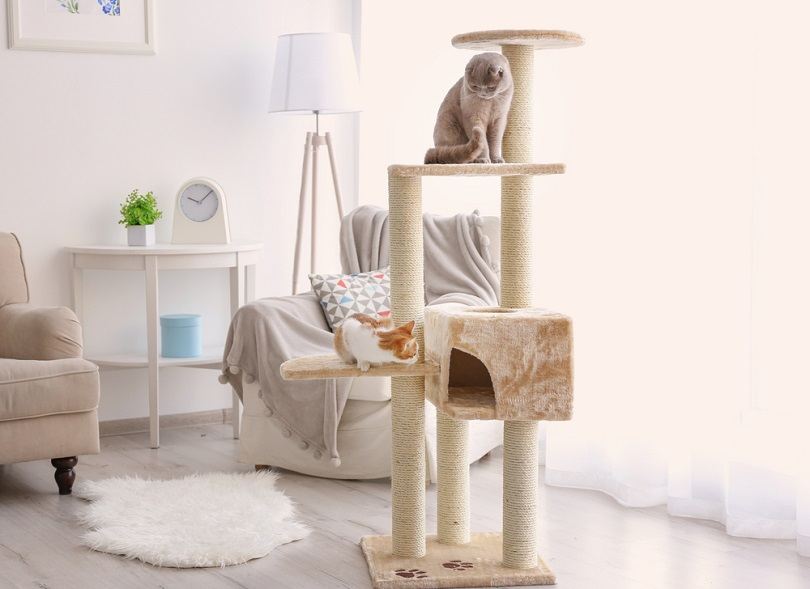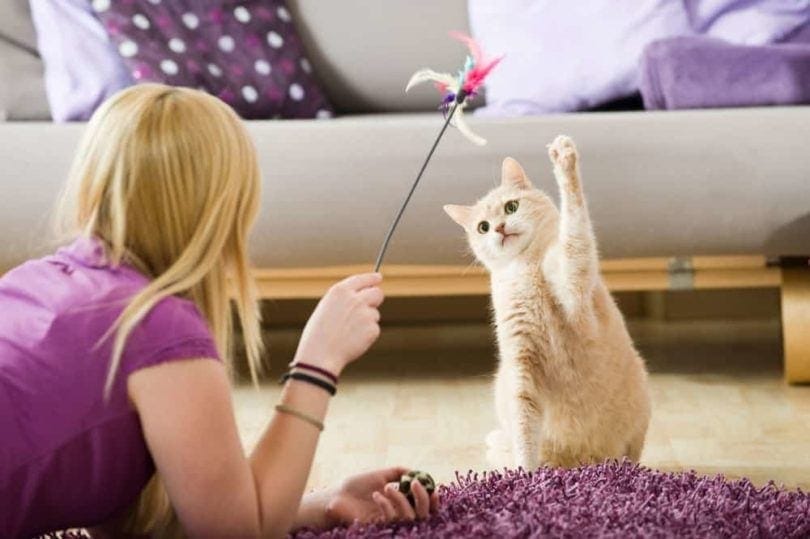How to Make an Outdoor Cat an Indoor One – 7 Vet-Reviewed Expert Tips
By Jordyn Alger
Updated on

Cats are creatures of habit, and significant life changes can be difficult for them to adjust to. There are many reasons you may want to adapt your outdoor cat into an indoor cat, such as safety and health concerns, but that doesn’t change the fact that the process can be difficult. To help you adapt your outdoor cat to an indoor cat, we have seven expert tips to make the transition as smooth as possible for both of you.
How to Make an Outdoor Cat an Indoor One
1. Have Confidence
The first step to transitioning your cat from an outdoor to an indoor pet is to look inward and work through the self-doubt you may be experiencing. You may be uncertain about this course of action and wondering if it is selfish to change the life of your cat so drastically.
Have confidence! Although many cats can live outdoors, the outside world is a dangerous place for cats. There are endless risks, such as the possibility of getting hit by a car, attacked by wild animals, infected with disease or parasites, stolen by strangers, or harmed by people who hold prejudices against cats. It is possible for you to adjust your cat’s life without causing them any discontent whatsoever.

2. Start Slowly
Introduce your cat to the indoor world if they are unfamiliar. Allow them to explore the house and check out all the nooks and crannies that prod at their curiosity. And when they want to go back outside, consider letting them go—the first time. Be mindful to not cave into your cat’s demands, as they may quickly learn that insisting on being let out will lead to compliance from you.
Gradually, increase the amount of time they spend indoors. As time goes on, your outdoor cat will slowly begin to spend most of they day indoors.
3. Make the Indoor Space Exciting
If you can show your cat that indoor life can be just as exciting (if not more exciting!) than outdoor life, they will be more inclined to stay indoors on their own accord. By providing indoor opportunities for your cat to behave as they would outdoors, they will be more eager to stay inside.
You can spice up your cat’s indoor life by finding a window for your cat to sit in. If your cat can watch the outdoor world from the safety and comfort of the indoors, it will keep them entertained. You could also grow cat grass for them to chew on or provide plenty of areas to climb.
Toys are an absolute necessity. The more enticing toys your cat has, the more entertained they will be with their indoor life. Spend lots of time with them while they’re indoors since the interactive play will also make indoor life very enticing.
4. Get a Scratching Post
Your formerly outdoor cat will want to scratch, so providing scratching posts or other surfaces is necessary. This is also important for maintaining the health of their claws (and for sparing your furniture). Scratching is natural behavior, so you cannot expect your cat to stop scratching once they come indoors. Training your cat to scratch the scratching posts will help them feel comfortable in their new home.
5. Bring in a Cat Tree
If your cat is going to miss anything about the outdoors, it will be the unique places they can perch. Thankfully, you can replace those outdoor places easily with a fun cat tree! Cat trees that offer varied perches (such as condos, tunnels, and more) will be more interesting for your cat. Some cat trees include dangling toys, which can provide entertainment opportunities for your cat.
Some also have scratching posts, which will be useful for cat owners trying to train their newly-made indoor cats how to behave in the house.

6. Feed Indoors
If you are feeding your cat outdoors, bring his food and water bowl inside. The longer your cat comes inside to eat and drink, the more positive associations they will make with indoor life. This can also allow you to start extending his indoor stays.
When they come inside to eat, close off the exits, and keep them indoors for a little while longer, even if they meows to be let out. Distract them with toys and treats to continue the positive associations with the indoors.
7. Schedule Time for Regular Interactive Play
Make sure that you are engaging in play with your cat at least once each day. If you can play with your cat regularly, your cat can learn to expect interaction around that time. That will keep them from growing antsy or feeling lonely, as they will know that playtime is just around the corner. If you can simulate prey behavior with your cat’s toys, they will be even more engaged when playing.

Is It Cruel to Make an Outdoor Cat an Indoor Cat?
When transitioning your outdoor cat to an indoor cat, you may be wondering: is this cruel? No need to worry; the answer is no. If you can transition your cat slowly so that they are accustomed to indoor living before you entirely close off the outdoors, they will not be frazzled when the day comes that they can no longer explore the wilderness.
Instead, your cat will be content to roam around your home. If you feel guilty about entirely removing the outdoor world from your cat’s life, you can find safer ways to expose your cat to the outside. Training your cat to walk on a leash or constructing a catio to lounge in are two safe, effective ways to offer your cat some outdoor time.
Cats need exercise and enrichment to stay happy and healthy, and walking them on a leash can be a great way to do both.
- Escape Proof - Cat leashes and harnesses for walking aren't all equally secure. Our double aluminium...
- Superior Comfort - Our cat harnesses are lightweight, made with premium velvet fabric, breathable...
Our Hepper Cat Harness & Leash Set combines a sturdy nylon climbing rope leash with a lightweight, highly adjustable harness. The machine-washable velvet and mesh harness is designed to be as comfortable as it is sturdy, and extra features like aluminum double D-rings, reinforced stitching, quick-release buckles, and reflective stripes make this cat walking set a great option.
Conclusion
Cats are generally not known for their rapid adaptability, but they can still manage change with grace. If you approach the transition from outdoor to indoor strategically and with patience, your cat may not fuss about the lifestyle change. Even so, there are ways to safely provide outdoor time for your cat if you are interested. Have confidence in yourself; as long as your cat’s safety, health, and happiness are the priority, you’re making the right decision.
Featured Image Credit by: maigrey42, Pixabay
















